Thirteen months ago, NVIDIA's stock was trading at just $33. In recent days, the company’s shares have surged past $210 again, marking a stunning "miracle" in less than two years. This incredible growth has captured the attention of investors and analysts alike.

Recently, NVIDIA released its third-quarter fiscal year 2018 financial results after the U.S. market closed on Thursday. The numbers exceeded Wall Street expectations, and the stock price jumped by 3.2% following the announcement. This strong performance highlights the company’s continued momentum.
In the quarter, NVIDIA reported total revenue of $2.636 billion, up 32% year-over-year and surpassing the $2.36 billion forecast by analysts. Net income reached an impressive $838 million, a 55% increase from the same period last year, beating the $592 million estimate. These figures reflect not only growth but also improved profitability.
NVIDIA’s stock had been under pressure for the past two days, but the positive earnings report pushed it back above $210. Just 13 months earlier, on January 1, 2016, the stock opened at $33. That’s more than a sixfold increase. Despite this sharp rise, some analysts still believe the current valuation doesn’t fully reflect the company’s potential, with some raising their price targets to as high as $250.
So why is the market so bullish on NVIDIA? What drove the strong performance in the third quarter, and can the upward trend continue?
First, the overall data continues to impress
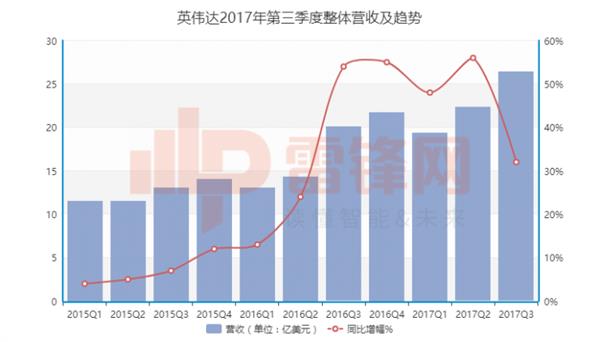
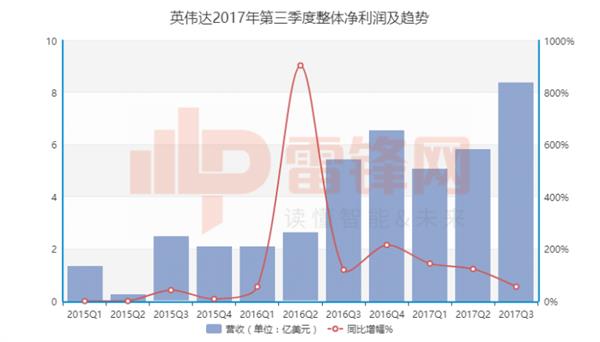
Although both revenue and net profit rose in the third quarter of 2017, the 32% and 55% year-over-year growth rates are far from bad. Even more impressive is that net profit grew faster than revenue, indicating better internal efficiency and cost control.
Second, GPU sales remain strong, with good cost management
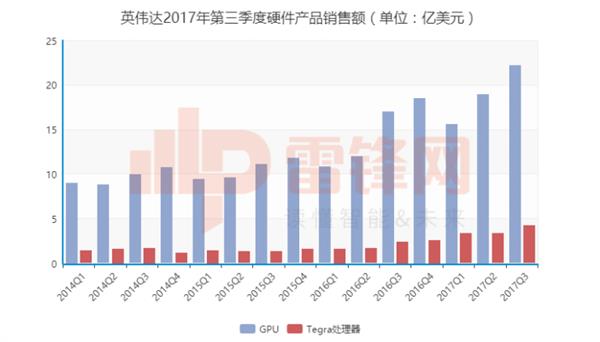
The GPU segment remains NVIDIA’s main revenue driver. This quarter, GPU products generated $2.217 billion in revenue, up 31% compared to the same period last year. This growth is fueled by strong demand for gaming graphics cards based on Pascal architecture, as well as rapid expansion in data center services.
While GPUs still outperform Tegra in terms of revenue, the latter saw a much higher year-over-year increase of 74%. This growth is driven by automotive applications and the Nintendo Switch, which uses Tegra chips.

However, revenue alone isn't enough to tell the full story. Costs are also important. NVIDIA’s R&D expenses rose by 11% to $462 million, while other operating costs increased by 24% year-over-year. Over the past three years, R&D investment has remained stable, with quarterly fluctuations typically below 10%. The recent increase may signal upcoming product launches, though details remain under wraps for now.
Third, gaming remains the largest revenue source
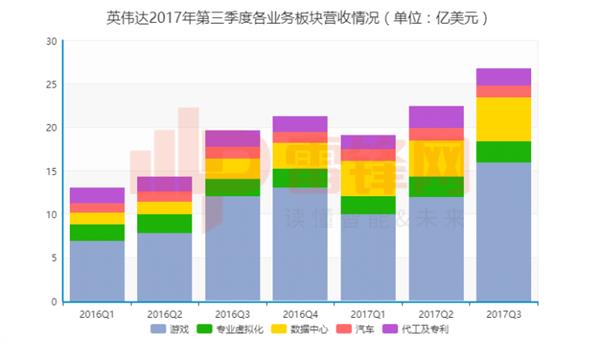
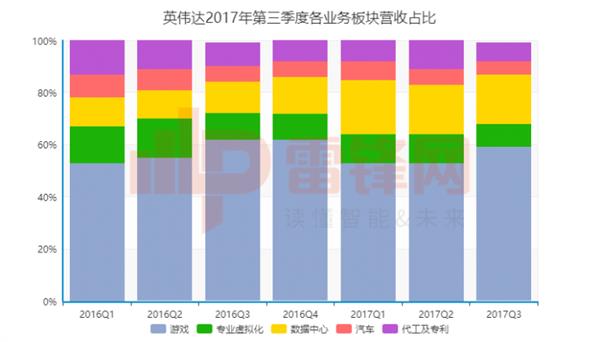
Despite the success of other segments, the gaming division remains NVIDIA’s backbone. It brought in $1.561 billion in revenue, accounting for 59% of total sales. But don’t overlook the progress made in other areas—data center revenue hit $500 million for the first time, growing by 109% year-over-year.
Fourth, CEO Huang Renxun speaks out
NVIDIA CEO Jensen Huang shared his thoughts on the quarter: “Numerous growth drivers contributed to our strong performance. We’re also encouraged by the global push to accelerate AI adoption.†He highlighted key developments, including the acceptance of Volta-based GPUs by cloud providers, the release of Tensor RT 3.0, and the growing popularity of GeForce and Nintendo Switch. Additionally, the Drive PX Pegasus autonomous driving platform is gaining traction among industry partners.
Overall, NVIDIA is well-positioned for sustained growth.
V: Summary
With forward-thinking strategies and a strong technical foundation, NVIDIA continues to move forward. While company statements are always taken with a grain of salt, the market’s response speaks volumes.
On November 7, AMD announced that Raja Koduri, its chief GPU architect, had left the company. Just a day later, Intel confirmed that Koduri had joined them as Chief Architect and Senior Vice President in a newly created Core and Visual Computing Group.
According to Intel’s official blog, Koduri will lead efforts to integrate and expand intellectual property in computing, graphics, media, and machine intelligence across various sectors, including clients, data centers, and AI.
Though both AMD and Intel have long histories, they’ve each carved out their own identities. AMD focused on graphics and processors, while Intel built its strength in AI. Their recent moves suggest they’re responding to the growing competition from NVIDIA.
Will NVIDIA maintain its momentum and continue to lead in innovation? Only time will tell, but one thing is clear—NVIDIA is still at the forefront of the tech revolution.
Hybrid inverters charge the batteries using solar power during daylight. If the Battery goes low, or during insufficient lighting, they charge the batteries from the Grid. These systems automatically switch between the solar power and the Grid.
This is great way of replacing polluting diesel generators. Your electricity bill will be reduced and your diesel bill will be eliminated.
Hybrid Solar System,Hybrid Solar System Price,Solar Hybrid Power Systems,Lithium Battery Solar System
Wuxi Sunket New Energy Technology Co.,Ltd , https://www.sunketsolar.com
